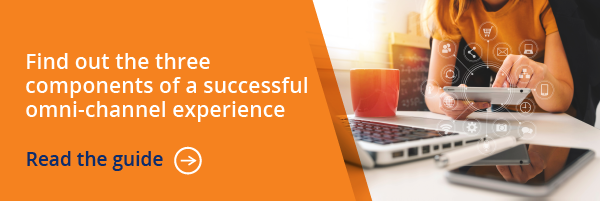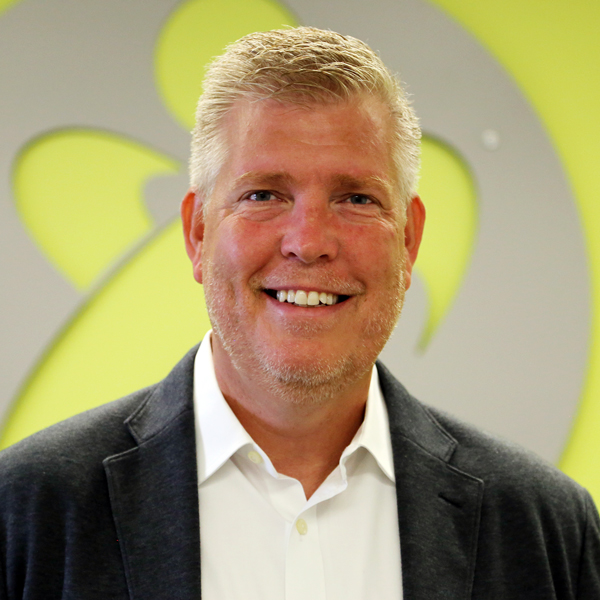To stay relevant in today’s hyper-connected world, employers must provide an “omni-channel” benefits experience.
 What’s that?
What’s that?
“Omni-channel.” Sounds complex, doesn’t it? Or maybe even “ominous,” depending on your appetite for learning new things. But the truth is, you already know a lot more about this concept than you may think. In fact, it’s all around you.
Today, most people will recognize an omni-channel customer experience in the retail environment. Think of your favorite store. Your loyalty card gives you rewards with one quick swipe. Your online portal has your purchase history and makes returns a breeze. When you can’t find your size on the rack, you can order it online. Emails recommend new products you may like, and text messages alert you to flash sales.
When your customer experience is this seamless, you feel the retailer really knows you and values your business.
While the term “omni-channel” is usually used in marketing products and services, it’s just as applicable to the HR space. More importantly, providing an integrated and cohesive employee experience is now expected.
- 72% of consumers say they expect companies to understand their unique needs and expectations.
- 59% say tailored engagement based on past interactions is very important to winning their business.
Fortunately, applying an omni-channel marketing approach to benefits engagement isn’t rocket science.
You’ll need to roll up your sleeves and find the right resources, but the work itself isn’t that difficult. In this blog series, I’ll discuss the three core components of an omni-channel benefits experience: Content, Personalization and Technology.
Content: the information your employees want
Bill Gates once said, “content is king.” The year was 1996 and Gates was speculating about the future of the Internet, still in its infancy. Content, he said, was where much of the real money would be made on the World Wide Web. And he was right. From Amazon to Google Maps to YouTube and a plethora of job-hunting sites that HR is all too familiar with, the reason people turn to the Internet is because it has the content they want, where and when they want it. Gates knew that compelling content that informs and entertains has the best chance of winning the battle for consumer mindshare.
HR professionals are also competing for their employees’ attention. When it comes to benefits, their job is especially challenging because:
- Benefits can be confusing. More than 60% of Americans don’t know the difference between a premium and a deductible.
- The average human attention span is now 8 seconds, down from 12 seconds just 20 years ago.
- During annual enrollment, employees spend an average of only 17 minutes selecting plans that will impact them—and their paychecks—for the next 12 months.
Granted, employee benefits is not the most exciting topic. It’s unfamiliar territory for most people and doesn’t carry the same sense of urgency as other workday activities. The trick is to grab your employees’ attention and hold it for as long as possible.
That’s where engaging content comes in. We recently produced a guide that provides five best practices for producing content that attracts and keeps your audience’s attention. Here are a couple tips from that guide.
Use simple language and an inviting tone.
Jargon, long words and complex sentences can make benefits communications almost impossible to navigate. As HR pros, we often forget that employees aren’t benefits experts. Also, be aware of tone. Benefits are already unfamiliar territory for most employees. Help them relax by using first-person pronouns like “you” and “us,” and contractions like “shouldn’t” or “you’ll.”
- Don’t say this: Eligible dependents do not include individuals covered as an employee, a former employee or a retiree covered under any other employer-sponsored plan, a legally separated spouse, a divorced spouse, or dependent children age 26 or older unless disabled.
Say this: Here’s who you can’t cover under the health plan: - Someone who already has coverage under our company health plan.
- Your ex-spouse, if you’re legally separated or divorced.
- A child over 26. If the child is disabled, call us to see if you can continue coverage.
Make it manageable.
While employees appreciate their benefits, they don’t love learning about them. It’s best to provide information in small, meaningful and manageable chunks that employees can easily understand. And, target communications whenever possible. For example, you can easily leave these three items out of your more general annual enrollment communications and instead send personalized notices and nudges just to affected employees:
- Reminders to update beneficiary information.
- Age-banded supplemental life decreases.
- Switching medical plan carriers and getting a new insurance card.
For more tips like these and to learn how to apply omni-channel marketing techniques to your HR communications efforts, check out Three Components of an Omni-Channel Benefits Experience.
Read part II of our series about omni-channel benefits here.



